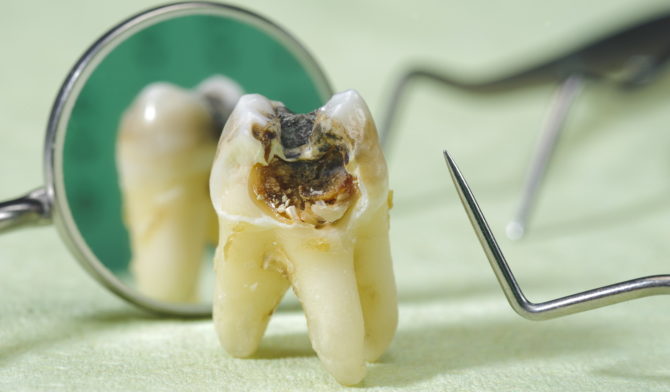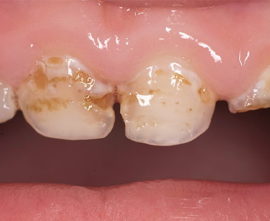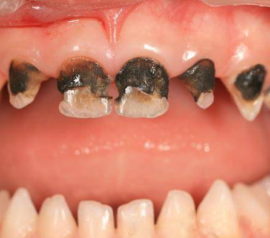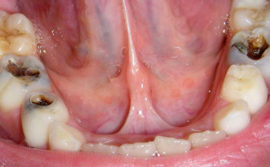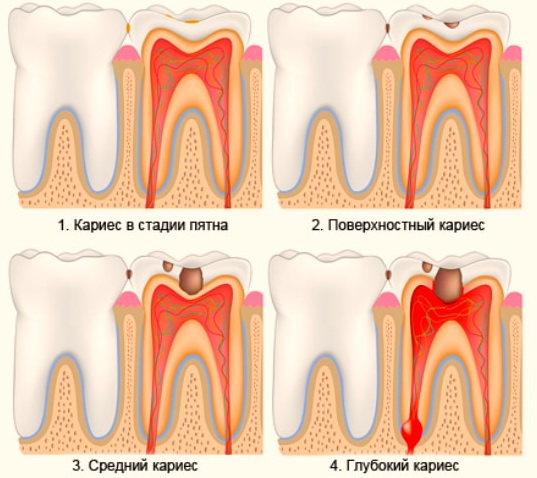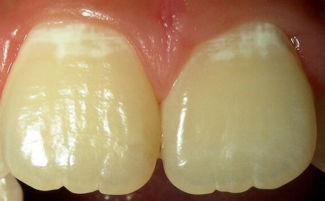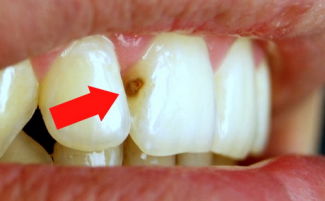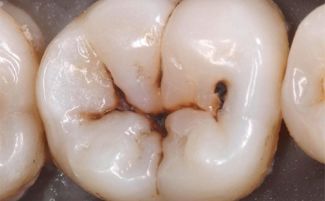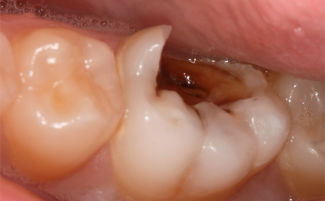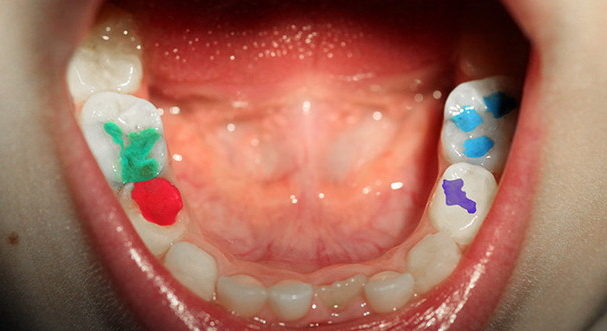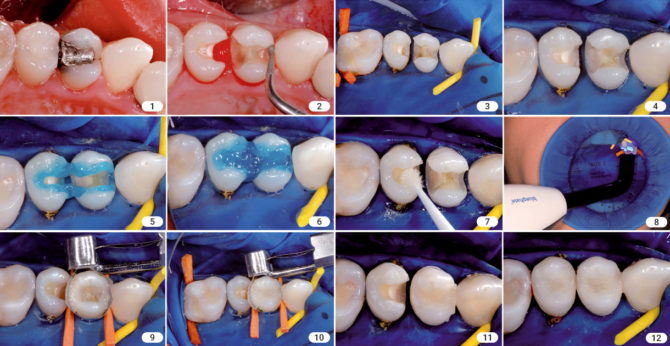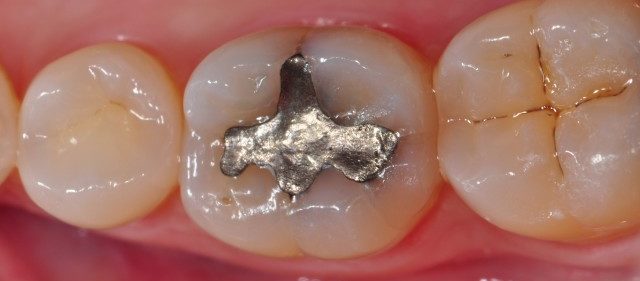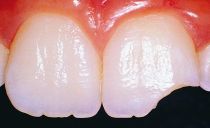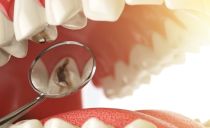Rotten teeth in children and adults: photos, reasons, what to do
Terrible milk teeth worry parents of many children, the cause of tooth decay. The same picture can be seen in the mouth of some adults, since no one is safe from exposure to cariogenic bacteria. Therefore, the condition of tooth enamel must be monitored constantly: starting in childhood and continuing into adulthood. And if you have the slightest suspicion of developing caries, you need to visit the dentist without delay, because in the early stages the disease is treated faster and easier.
Content
Why rot children’s teeth, photo
What many call enamel decay is common caries. Just in children, the carious process develops faster than in adults, and more often affects the front milk incisorsactively destroying them on the sides. Therefore, it seems that the child has “bad” teeth that simply rot.
According to recent studies, in 12% of children, caries begins in the first year of life. The cause of the disease is always bacteria, which are usually transmitted to infants from mothers or fathers through a spoon licked by them or a baby nipple.
Patients, rotten front incisors, as in the photo on the right, speak of the last stage of development of caries. At this stage of the disease, the tooth surface acquires a painful dark brown or nightmarish black shade, a carious lesion reaches the inside of the tooth and destroys hard tissues until the entire crown decays.
The propagation of cariogenic bacteria and the accelerated development of the disease is facilitated by such concomitant factors:
- the harmful habits of the mother of the baby during pregnancy;
- bad heredity;
- lack of oral care;
- excessive consumption of harmful, sweet food;
- a large number of citrus fruits in the diet;
- contaminated air;
- deficiency or excess fluoride;
- mechanical damage to enamel.
Why do rotting teeth in adults, photo
In adults, rotting of enamel is also associated with caries, but usually it begins to develop on premolars and molars - incisors suffer less often. Factors that lead to the development of a carious process on permanent teeth include:
-
Children's caries. An ailment that develops on milk incisors, canines and molars can affect the already formed rudiments of the permanent. Therefore, it is impossible to ignore the terrible, decayed teeth in children, even despite the fact that they are replaced by permanent ones.
- Improper or irregular oral hygiene.
- Irrational nutrition, in which the minimum amount of coarse fibers - fiber, enters the body.
- Deficiency or excess of certain nutrients in the diet of an adult.
- The presence of diseases of the gastrointestinal tract, affecting the digestibility of beneficial substances.
- Decreased immunity, contributing to the development of pathogenic microorganisms.
How to recognize tooth decay, stages of the carious process in time
In dentistry, caries are classified into superficial, medium and deep. The picture below shows their comparison.
In both adults and children the onset of caries is evidenced by an increase in tooth sensitivity to cold or hot. Sometimes sick incisors, fangs and molars ache when chewing solid food.
With deep caries, toothache occurs every time food or liquid gets on the affected area of enamel. The patient develops a putrid odor from the mouth, which is already felt a few hours after brushing your teeth.
Do not pull until the moment when the hard tooth tissue completely decays and the teeth begin to hurt constantly. If you go to the dentist at the initial stage of the development of the disease, you can get rid of it by simple methods that do not require the use of anesthesia and partial or complete removal of the decayed incisor, canine or molar.
Photos of teeth at different stages of carious destruction
What to do if a child decays deciduous teeth
There are several treatment options for rotten milk incisors, fangs and molars. The choice of the appropriate method depends on how long the tooth has been ill, and how the situation is running.
What to do if a child decays deciduous teeth:
- To treat the initial stages of a carious lesion, fluoridation is used. With him, the terrible, black teeth of a small patient are covered with a special varnish with a high fluorine content, due to which the enamel layer is restored, and the development of the disease stops. Fluoridation is commonly used to repair anterior incisors.
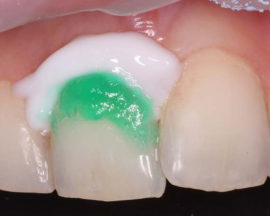 The most effective method for treating the carious process is ICON. It helps to restore even the teeth of an unhealthy black color, the main thing is that the destruction affects only the enamel. According to this technique, a pediatric dentist removes tooth tissue with rot, and in their place imposes a special composition, which can be seen in the picture on the right. At the end of the procedure, the composition is dried to make it as strong and invisible as possible.
The most effective method for treating the carious process is ICON. It helps to restore even the teeth of an unhealthy black color, the main thing is that the destruction affects only the enamel. According to this technique, a pediatric dentist removes tooth tissue with rot, and in their place imposes a special composition, which can be seen in the picture on the right. At the end of the procedure, the composition is dried to make it as strong and invisible as possible.- In the most advanced cases, scary children's teeth are simply filled, but only glass-ionomer cements are used for this. They will be washed along with natural hard tissue, and therefore will protect the small patient from discomfort until the period of change of the milk bite for a permanent one. An example of such a seal is shown in the photo below.
How to treat rotten teeth in adults
In adulthood, anesthesia can be used, so the list of acceptable methods for treating caries is expanding. In the early stages of the disease, enamel fluorination is used, and with advanced forms of the disease, the removal of diseased dental tissues and filling are performed.
To restore the appearance and functionality of poor permanent incisors, fangs and molars, different types of fillings are used. Most popular options:
- photopolymer;
- glass ionomer;
- ceramic;
- amalgam;
- plastic.
In modern dentistry clinics, photopolymer fillings are most actively used, which harden only under the influence of a special spectrum of light. The finished seal looks very natural and is able to withstand severe mechanical stress, but is expensive - from 2 thousand rubles. The installation process is shown in the picture.
In second place in popularity are glass ionomer fillings. They cost a little cheaper than photopolymer, but they are very quickly erased: every 2 years they have to be done again.
Ceramic fillings are almost impossible to distinguish from natural enamel, in terms of strength they are also much better than all other options. But nevertheless, ceramic filling materials are rarely used, since they have high prices - from 15 thousand rubles.
Amalgam fillings are made from a unique alloy of metals. An example of a molar restored using such a filling material is shown in the photo below. Looking at it, it becomes clear why amalgam fillings are not very popular.
Acrylic fillings are also not very common.They look as natural as possible, but become unusable in a matter of months.
There are many ways to combat the decay of incisors, fangs and molars. But it is better not to start the disease and eliminate it at the initial stage of development, when for the restoration of the tooth it is not necessary to remove decayed tissues and establish a seal.

